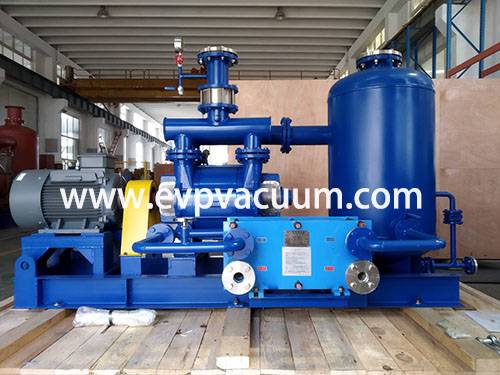vacuum pump in synthetic material industry
Synthetic materials are an important part of new materials. It is often used in industry. Today we will introduce the application of vacuum pump in synthetic materials.
Synthetic materials are different from natural materials. Synthetic materials not only have more abundant sources, but also can control the synthesis process and achieve various required material properties.
Most of the raw materials for synthetic materials come from petroleum. Petroleum is extracted and refined to obtain basic chemical raw materials, then transformed into chemical intermediates through a series of chemical units, and then polymerized to obtain various synthetic resins.
After further processing and molding of resin, synthetic materials are finally obtained and put into construction, transportation, daily use and other application fields.
Rayon industry chain is a typical example. In this industry chain, the existence of vacuum pump is everywhere, including resin production, extrusion degassing, masterbatch blending, film sheet, vacuum molding, expanded polystyrene, etc. We will explain how vacuum pumps can help the development of the new materials industry.
The formation mechanism of resin can be understood as the polymerization of small molecules into long chain macromolecules. In this process, small molecules in the gas or liquid state are polymerized continuously, and the molecular weight is increased gradually, finally forming solid or viscous polymer, i.e. resin. According to different polymerization reactions, the resin can also be roughly divided into polyolefin (addition polymerization) or polyester (condensation reaction). Resins are usually granulated by extrusion to form particles for transport, storage, or reprocessing.
Synthetic materials are usually the products of synthetic resin processing. As the matrix of materials, the properties of resin often determine the basic properties of materials, such as mechanical strength, heat resistance, transparency and so on. It can be said that the resin with excellent performance is the premise of obtaining high-performance materials. Therefore, the production process that affects the performance of resin is particularly important.
For polyolefins, gaseous materials such as ethylene are introduced into the reactor through vacuum. The polymerization was initiated by solid catalyst and carried out continuously in the reactor. After polymerization, the product was taken out of the reactor for degassing. In the degassing tank, deactivator is firstly introduced to inactivate the catalyst; the unreacted monomer in the product is removed by vacuum system (the system will be recovered to the reactor for circulation reaction). After that, the product enters and is removed from the tank, and the vast majority of moisture and volatile gas are removed by circulating nitrogen driven by vacuum. Finally, the product forms powder and is fed into the extruder together with additives. After melting gradually in extruder, the melt removes volatile gas through vacuum port, then accumulates through pressure, and then cools to form granular product.

The production process of polyester is similar to this one. It needs vacuum system to remove the unreacted monomer or by-product after polymerization. Extrusion process is usually used for granulation or modification.
It can be seen that a suitable and stable vacuum is the key process of resin production, which determines the viscosity and color of resin and other key indicators.
In the above process, the medium pumped by the vacuum system inevitably contains organic solvents or compounds. These chemicals are usually flammable, corrosive or toxic. In addition, oligomers with certain molecular weight can be easily vacuumed. If the vacuum system can not deal with the above impurities safely and effectively, it will inevitably lead to process abnormality, pump body damage and even safety accidents.
In addition, the vacuum and temperature need to be stable for a long time to avoid frequent fluctuations that lead to unqualified products or shutdown maintenance.
EVP vacuum pump manufacturers have complete vacuum products. The classic water ring vacuum pump can continuously supplement the working fluid, making the pump temperature almost constant to room temperature. In this way, flammable or explosive gases can be safely handled. In addition, the working fluid can also wash away the oligomer in the pump, thus avoiding the risk of blocking the pump body. The new dry pump has unique sealing technology, efficient cooling system and sensitive temperature control function, which makes the pump body become a sealed cavity with stable temperature. In this way, corrosive or toxic medium is kept as dry gas entering and leaving the pump body, thus preventing the corrosion or pollution diffusion of harmful substances.
Typical vacuum system components include: vacuum pump (or combination of roots pump and vacuum pump), inlet condenser, inlet separator tank (optional with or without filter), inlet gas / solvent flushing and outlet condenser / receiver tank.
(The article comes from the Internet. If reprinting is not allowed, please contact our company to delete it.)
